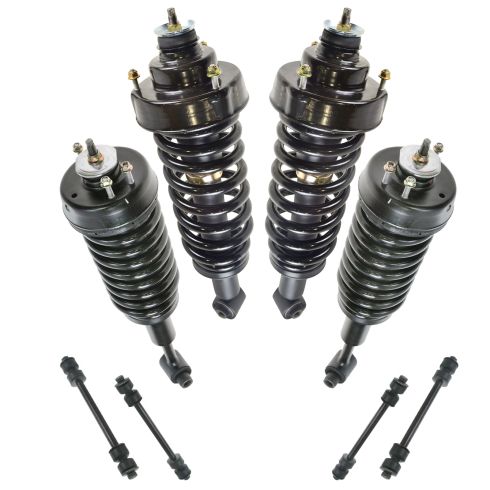1ASFK05901-2002-03 Ford Explorer Mercury Mountaineer Front & Rear 8 Piece Suspension Kit TRQ PSA63595

Replaces
2002 Mercury Mountaineer Front & Rear 8 Piece Suspension Kit TRQ PSA63595

Product Reviews
Loading reviews
5.00/ 5.0
1
1review
June 2, 2023
Parts arrived on time, bolted right in and got rid of the clunk in the rear of my vehicle and lastly the videos really are a tremendous help.
Customer Q&A
So is this good for a 2003 Ford Explorer 4dr xlt 4x4?
June 17, 2021
10
Yes, according to the information you provided, this part will fit your vehicle.
June 17, 2021
Andra M
What size lift is this 3 4?
July 13, 2021
Does this kit add 3 to the front and 2 in the back?
November 25, 2021
10
Hello, these are direct replacement struts, they would restore the original height of the vehicle.
November 26, 2021
Ricale A
Mercury is a registered trademark of Ford Motor Company. 1A Auto is not affiliated with or sponsored by Mercury or Ford Motor Company.
See all trademarks.



















